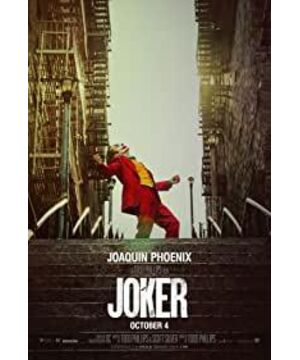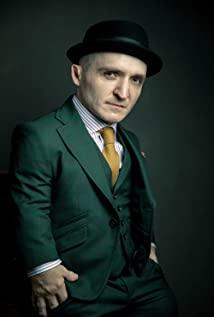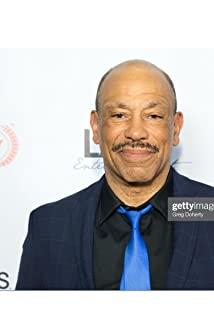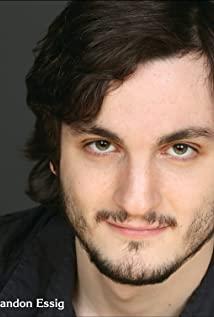This is a note for pulling films. It is shared for the reference of fans. The writing is not elegant. The reading process may not have the pleasant feelings and intellectual enlightenment of lyrical film reviews. For students with concepts, please choose carefully.
There is no doubt that "Joker" is a film that explores empathy, and empathy is precisely the most subtle part of the sense of separation between tragedy and comedy. People with strong empathy can't laugh at comedy, and empathy is lacking. I can't cry when I watch the tragedy. As the protagonist, Arthur is of course condemning the latter, but he condemns some of them, which means that the tragedies of the weak who have witnessed unsatisfactory lives, those who are able to help them but do not care about their life and death, those who are selfish are pleased Obviously please hope in exchange for meagre respect. As long as the sympathy is sincere, even if you just listen carefully to what is being said, instead of rushing to dismiss it, beware of it, or even make use of it.
The reason why it is considered to be classic enough is not because of the overwhelming emotions and slogans in it, nor is it another home base for the DC villain's characters, but because it has been diligent in completing character research while finding the distinction between tragedy and comedy in ontology. The difficulty of separating these two narratives through personality and tone is that the villain plays the protagonist and does not output mainstream values. It is inevitable to find a balance in the setting, but under such technical difficulty and public opinion pressure, it can still be The structure is almost perfect, which is incredible. This is actually very convincing.
Movies with character research as the ultimate appeal are based on psychological analysis and social observation to organize the plot, but more importantly, the character’s stress response. At this point, the performance (or the performance of the director) is nothing to say. , The so-called development of the villain’s perverse personality, this work is considered to be of great analytical value. In view of the lack of research on psychology, performance, art, director and even theology, semiotics, etc. that are talked about in other articles, just talk about it. For some experience in the three-act structure of the film, if you have a basic structure and drawing, you can go directly to the table at the end of the text to see the picture part. The following text part only writes the five time points in the beat table that I think are more representative. Others It is estimated that most people will not care very much, so please mention it yourself if you are motivated. But I can’t read the English script because my English is so poor that it’s hard to tell whether the translation is accurate or not. The finished film does not represent a three-act script. In short, the conditions are limited.
"Joker" has a very high gold content in the opening scene, the second-act convergence point, the middle point, the third-act convergence point and the final scene.
More discussed are the two scenes at the beginning and the end of the film with grinning clowns with hands, that is, two still-frame pictures that explain everything. They are typical opening scenes and final scenes that echo each other, but they are used to show the state of the characters and their inner changes. The plot that echoes this is nothing more than the two chase scenes at the beginning and the end of the movie. At the beginning, Arthur is chasing the little crouch, but he hurries slowly but is tricked into the back alley for a fat beating. At the end, the clown who killed the social worker is killed by the lunatic asylum. The nurse was chasing and playing in the corridor, and the role change between the chase and escape was enough to show that the role of the clown was complete.
Focus on the connection point and the middle point. In the middle point, I thought the design was a bit general at first, but in the process of making the watch, it took a few hesitations to make the final judgment. When I pull the film, I usually find the middle point first, which helps to identify the source of the protagonist’s problem. The middle point is often an inadvertent and fleeting small mistake, and its impact is far-reaching, although it may not be revealed immediately, but Destined to destroy the bond between the protagonist and his team, and often creates a gap on the psychological level. The difficulty of confirming the intermediate point is usually less than that of the connecting point, but the film is hard to distinguish.
Before that, refine the moral premise.
Although "villain characters" like clowns may not apply moral premises, they are also the values exported by characters. Moral premises are basically the conclusions of the thesis. Movies that demonstrate moral premises are basically debate feature films. Write these scripts clearly. Probably it is a three-part argumentative essay, an eight-part essay, dialectically proposing the central idea. Use complex sentences to show for example: what is wrong and what is right; this will fail, and that will succeed. It is necessary to display both negative and suggested views, and demonstrate separately with the help of the development of different roles in the story. The three-act structure is formed in this kind of argumentation process. It is the different stages of the development and change of things, that is, the old world enters the new world (argument), the new world is more likely to expose its nature and cause the door to the old world to close (refutation). Living in the new world can only cure the problem (combined topic) by transforming oneself, and it is the same to describe it by filing a case, collecting evidence, and trying. The choice of the story is nothing more than to find the subject matter, character, and will that naturally have this phased change, and to conceptualize and type them. The tempo chart is just a few pages of paper. If you can read it through, you will already have a high fragrance. Reading McGee can easily become addicted to the theoretical research itself, and thus fall into a kind of religious fanaticism that is taken for granted. In the end, it is hesitated in genre disputes and self-satisfaction, which hinders For practical creation, this paragraph is purely nonsense by Su Fah, and it is not accurate.
Arthur hoped: "I only hope that my death is more valuable than my life." It can be understood that the "value" of "death" is to stop causing trouble for others, which means that "living" is redundant, and he is suicidal. of. This sentence is written in the diary that collects jokes, which means that the extra thing is worth ridiculing, and the very violent thing of "death" can make others happy. In the film, Arthur was repeatedly evaluated as "not funny" in his words and deeds. His inevitability as a comedian to entertain the public has strengthened the necessity of suicide. So it can be understood as: I hope my death is a comedy. Combining the above ontological considerations, it is probably another sentence of Arthur: "I thought my life was a tragedy, but I now understand that it is a damn comedy." Comedy corresponds to tragedy, so his hope is Become: Since my life is a tragedy, I hope my death is a comedy. Combined with his choice at the end of the story, I guess the moral premise should be: the death of a good person is not a comedy, but the death of a bad person is a comedy. Then the film is mainly to prove: the death of a good person is caused by the lack of empathy of others, which is not funny, while the death of a bad person is self-acceptable, which is very pleasant.
From suicide to murder, how Arthur changed from a victim to a perpetrator. The table at the end of the article analyzes this process in detail, and only his initiative is discussed here. Because the inter-action point is the sign of entering the next scene, requiring the protagonist to make his own choice, I personally think that being forced is also a kind of initiative, just a helpless act, sometimes this forced determination represents a stronger will . Combining moral premises and ontology can basically get:
The four stages of character creation experience (the middle of one interlude is regarded as four acts):
1. The opening scene ~ the second act of convergence (old world): as a victim of tragedy; 2. the second act of convergence ~ midpoint (new world): as a victim of comedy; 3. midpoint ~ the third act Convergence point (new world that collapsed due to the demise of the old world): as the perpetrator of tragedy; 4. Convergence point of the third act ~ ending (reconstruction of the new world of order): as the perpetrator of comedy.
What is sandwiched between the scenes is the connection point and the middle point. The prop "gun" for practicing death serves as a clue in the film. You can consider using this clue to test the cut of the old and new worlds, but in the final analysis, it is to sort out the characters along the giver and receiver of the action of death and the change of mentality.
Let me talk about the convergence point of the second act.
Before and after the connection point of the second act, it is still the victim's personal settings in psychology, but the behavior has had to step into a new world. I guess it should be in the scene of shooting bad people. Generally speaking, it is good to find here, but Killing one person is enough, why arrange for Arthur to kill three people? This treatment is very interesting. When he killed an enemy, he was a legitimate defense when he realized that his life was threatened. Arthur was completely panicked, and his thoughts were broken. He was very scared, so he almost killed the second person by inertia, but he could not kill the third person. Killed, but he subconsciously decided to kill him. He ran a long way and fired several shots. He was not mad and did not enjoy himself. He was just weighing the pros and cons. He was forced to take the initiative, so he could only kill the third person. It was only then that he stepped on the point of the second act. Since then, his life has never been interesting and slowly began to be interesting. This is also the main narrative task completed in the game link. By".
Let's talk about the middle point.
Arthur's colleagues contributed almost zero in the second act of the film, and only the family can rely on. The middle point is about making mistakes. Arthur made a lot of mistakes, but they did not affect the relationship between him and his mother, because this was the bottom line he showed, and even more attentiveness than collecting jokes. When did the real bad things happen? Obviously, the mother had a stroke and was hospitalized, but this is directly related to the police's visit and investigation, but Arthur would think he was responsible in his heart. If he did not go to Wayne, the police would not have the opportunity to harass his mother. Arthur went to Wayne to admit his relatives with great expectations, but was told by the housekeeper that his mother had delusions, and the relationship with Wayne was fabricated by her wishful thinking. Originally, he hoped that the family would become complete. What he gained was the suspicion of his mother. He was unable to ask his unconscious mother for verification. He could only shelve it. Although he didn’t know who was lying, this incident left him, his mother, Wayne, The young master’s "family" is the seed of rupture, but as a false victory, it seems that the falsification came too straightforward. Are there other intermediate points? There is.
I once guessed that Arthur’s TV watching position in the ward was more suitable as an intermediate point. Murray played a video of Arthur’s first talk show on stage in his show. Arthur was overjoyed, but Murray just regarded him as A joke, this was a blow to him. This is a typical pseudo-failure. His stupidity has soared in popularity once broadcast, so the program team later invited him to be a guest, and even further tied up the "family" formed by two loyal viewers of him, his mother, and his spiritual godfather Murray. . But this mistake was not made by Arthur, and it can't even be called a mistake, and the bad thing about the mother's stroke occurred earlier than this, and it cannot be attributed to the "game link." I even wonder if Arthur’s previous performance on stage was a mistake in the middle point. After all, it planted the seeds that broke the "family" such as him, his mother, and the spiritual godfather. It's hard to convince yourself. Does the middle point still exist in the visit to Wayne? Yes, because I found a detail in another scene.
Arthur saw Wayne in the bathroom. Before he said anything, Wayne knew his intentions and actively advised him to dispel the idea of acknowledging his relatives. It can be guessed that the butler had resumed the order with him, and he did not intend to take the order. Arthur broke out after he learned from Wayne that he was adopted by his mother. He lost his temper due to accidents, grievances, and anger. After he became ill, he burst out laughing, and Wayne was so embarrassed that he was full of fists. On the surface, Wayne's roughness was due to the challenge of authority, but he said a word to keep Arthur away from his son, which is enough to prove that his anger was because of the threat to family safety. But what did Arthur do to his son? He has always been very polite and even humble, unless the other party's words and deeds involve the reputation of the mother or his duty as a son. So I can confirm the position of the middle point. Just after Arthur learned from the housekeeper that his mother had delusions, he acted rough with the housekeeper. It was this unusual behavior that caused the housekeeper to say something to Wayne. His mistake was straightforward. When I saw Wayne, what was waiting for him was not the "father-son relationship" but the "enemy relationship". In addition, he was indirectly responsible for his mother's stroke because of his travels. At this moment, Arthur's "family" officially collapsed.
Finally, let's talk about the convergence point of the third act.
The third act of convergence means that Arthur has found a solution to the problem. What problem needs to be solved? Obviously it is not suicide, because the purpose of suicide or the value obtained is not to add obstacles to others, and it is easy to solve. The plan of suicide is just the first half of the sentence where the moral premise is denied. The aforementioned moral premise discusses not how to die, but the question of who deserves to die. At the end of the film, Arthur mentioned "the blame is one's own", so at the point of convergence, you have to find the person who "takes your own blame" and let him die in the third act. Arthur killed three people after entering the second act, one was his mother, one was Randall, and the other was Murray. The mother was killed because he planned to commit suicide. After his death, there was no one to take care of his mother. He could only kill her to avoid her becoming a tragedy that would drag others down. Although Randall "takes his own responsibility", he was a little bit upset. So is Murray? This starts with the scene where he died.
This is a heavy scene. Arthur took the stage according to the plan he designed in advance. He opened his diary and stared at his obsession. At this time, he had not made up his mind to kill Morey, but his jokes were deemed inappropriate. , He talked about death being attacked by the guests, the discussion about the killing turned out to be booed, and questioned that everyone sympathized with the bad people but didn't care about the patients. At this time, he did not make up his mind to kill Murray until he frankly admitted that Murray was a bad person and invited him to come. In order to make fun of him, he should have had the intent to kill, but he still didn't do it right away. When did he do it? Let us recall that when Arthur confessed that he had killed someone, Kim reminded Murray to ask him to step down. Murray did not, and then the audience asked him to leave. Murray did not. He tried to educate him to criticize him, but Arthur released and wanted to tell a joke ( After the signal of death), he showed impatience because he was interrupted, but it was not until Arthur became angry that he realized that he was out of control and hurriedly asked Jin to call the police. At this time, Arthur chose to shoot. Why do you start this time? Let’s replay it from Murray’s perspective. When the content of Arthur’s conversation went off track, out of professional acumen, Murray wanted to use this to create a topic. This spiritual godfather led Arthur to expose his problems step by step until he talked about society. He also criticized Wayne. As a veteran control player, Murray felt that he was just stepping on the rhythm that could criticize him. He wanted to occupy the moral high point by identifying him as the spiritual leader of the gangster, but he became an authoritative model without empathy. Arthur finally had the intent to kill and released the signal of death. Substituting from Arthur’s perspective, he didn’t start robbing before, because he saw Murray as a comedian and talking to the spiritual godfather. He didn’t realize Murray until Murray criticized him as a spiritual leader. He and Wayne are a kind of people, they are not present, do not understand his pain, and are immersed in the pleasure of controlling the court, and blindly accuse them. They don't want to understand him at all. Arthur feels sad. The jokes he wants to tell also kill him. , Called "fake the blame", but at this moment he hasn't acted until Morrie doesn't even listen to him, insisting on asking Jin to call the police, and Arthur sends him on the road.
In this way, Murray is more like Wayne's scapegoat. In this scene, Arthur may be trying to identify Wayne as a bastard because he should die. But Arthur did not kill him, he died at the hands of clowns. Killing with a knife is one of them, and the "blame for yourself" of strengthening the spiritual godfather is the second. The film really wants me to forget that Wayne is the most damn thing for Arthur. Arthur didn't even think about revenge when he was beaten. It can be seen that I don’t want the protagonist to bear the burden of father killing, which interferes with the confirmation of the third act connection point, but Arthur must be asked to confirm that Wayne is "self-blame" in order to meet the aforementioned replay. The design of the godfather of the spirit of the spirit backs the pot, thereby solving the motivation problem of the third act. The film did not give evidence to make Arthur make up his mind. After all, he seemed to have nothing to do with Arthur's mother except for the work relationship. On the contrary, the performance of the housekeeper was rather ambiguous and suspicious. But when I watched the clips before and after the timeline repeatedly, I found the answer, and I also found the connection point of the third act, which was ultimately related to the B-story composed of Wayne and Arthur's mother.
Arthur pulled out a photo of his mother when he was young from his mother’s dressing table, with a signature TW on the back, which is clearly the initials of Thomas Wayne, and the words "My Favorite Smile" may prove something, and even influence it. In response to the mother's expectations of Arthur, even the nickname was called happy. If they had ever had such episodes, why did they describe their mother so unbearably in Wayne's mouth? Wayne lied, at least in order to avoid disclosing what the relationship was hiding, and Arthur had just sent away his mother by himself. However, apart from holding the photo into a ball of paper, he was very calm, but the knock on the door was heavy and exciting ( Reminder) He, so he hides the scissors on his body, no matter who is outside the door, he will definitely become Wayne's surrogate. At this moment, he is also ready to be crowned as a total abuser, wearing his unique comedy crown.
Attachment: pull sheet table
It has been almost eight years since the last time I wrote film reviews seriously, and that was just to hand in my homework. It's been three and a half years since I wrote the last one casually, and I thought I couldn't write it again. Just like this, I continue to exist in the learning beanie as a film critic, and my heart will not hurt. For the first time this year, I wanted to write something about "Parasite" to a movie, and finally I fooled myself with a short comment. When it came to "Joker", I just took advantage of the heat to pull a piece of it, and it ended up thinking about it for three days! Did not pay attention to double eleven. Originally there was only one table, and writing self-correction took another two days... The last time I was so entangled was ten years ago in order to write "Little Pig Classroom" better. I was moved by myself, but it only took three days. This one is because the logic is relatively complicated, so I am embarrassed. I am afraid that there will be some big omissions that will make people laugh, but it doesn't make sense to me, right. In this way, it is still possible to sort out to the above level with the help of images, and use the results to reverse the development. It is conceivable how entangled the screenwriter is at the stage of the script. Not only the gems are unsurpassed before, but they also have to start from scratch. It is too difficult to add to it just thinking about it. With this achievement, it deserves its name.
View more about Joker reviews











